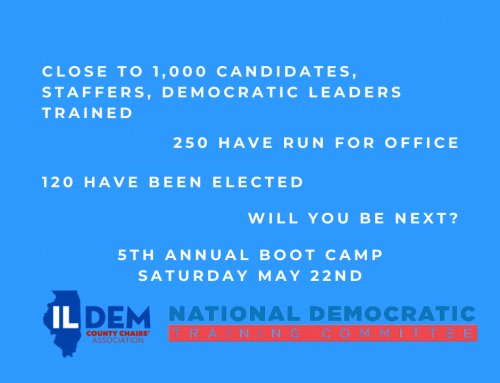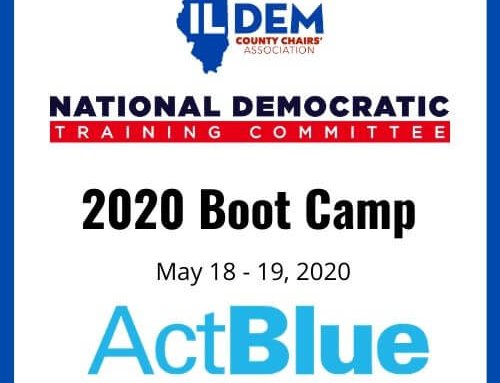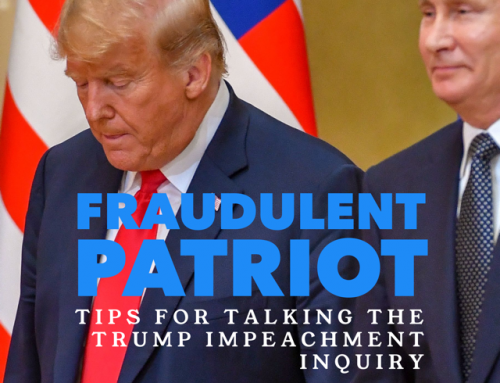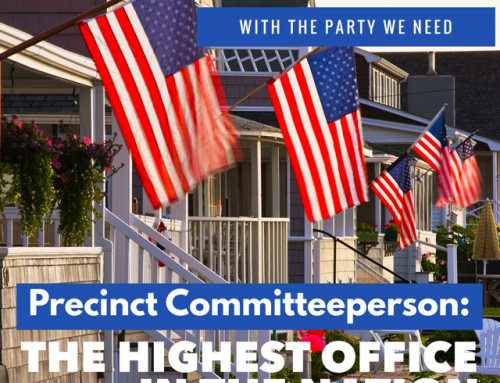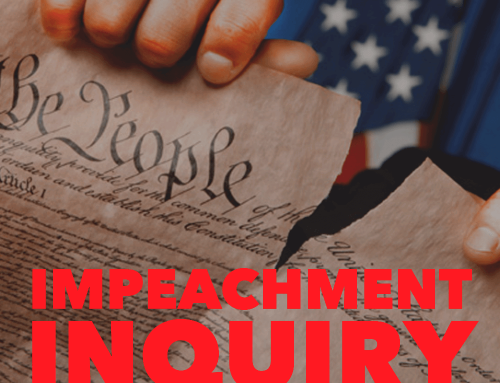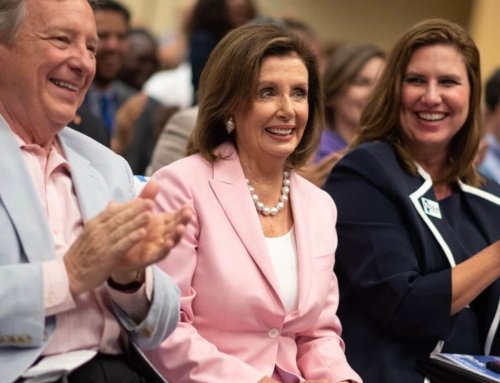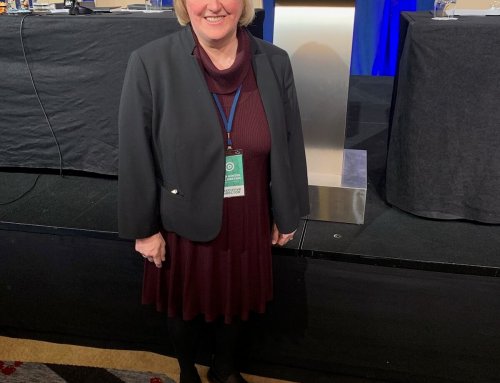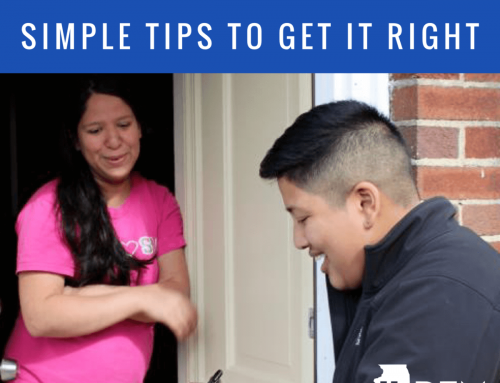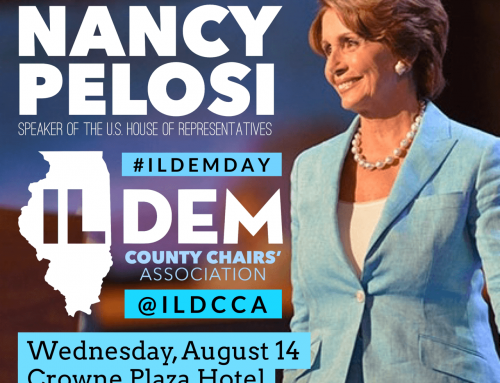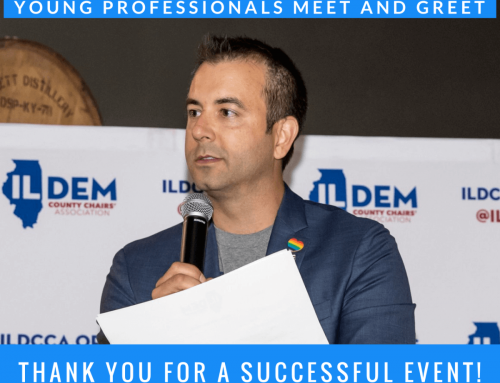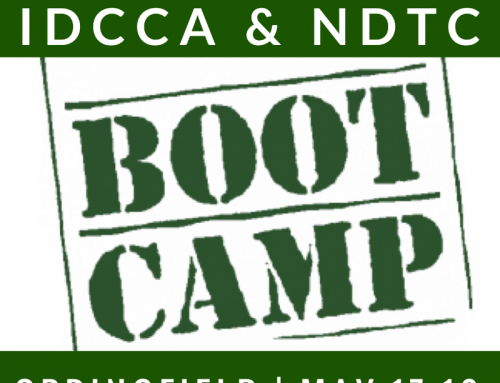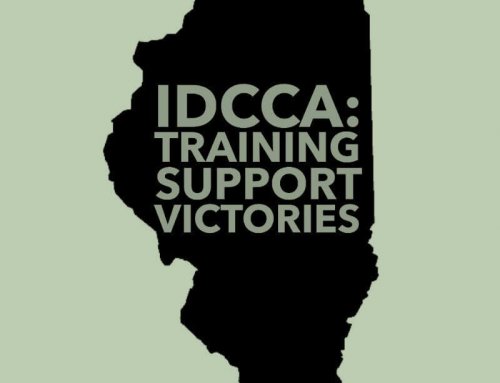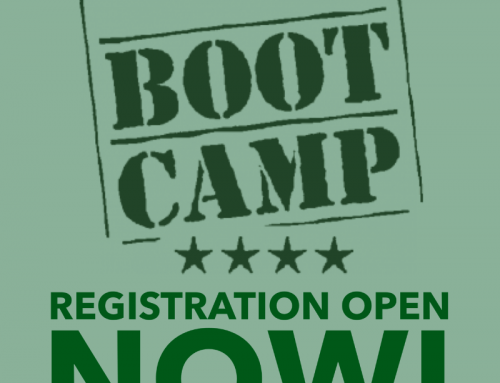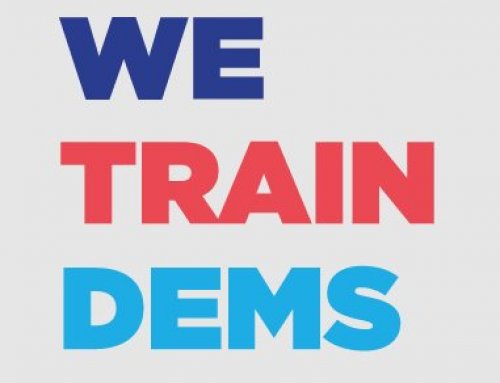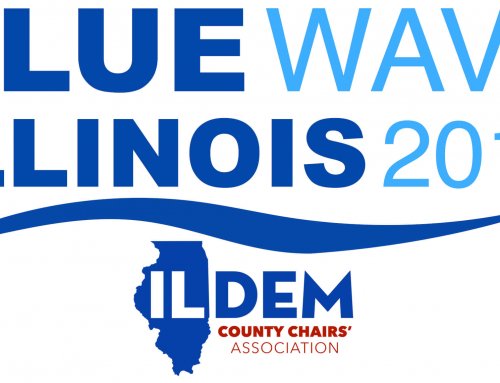Your Campaign Message: Understanding the Personal Narrative
by National Democratic Training Committee, @traindems
Storytelling and Structure
Before we dive into the stories of us and now, let’s quickly review what we’ve learned so far.
In part one, we focused on the importance of storytelling and how it fits into different contexts. While speechmaking is limited to the stage, you can tell a story anywhere.
Last month, we also established how the personal narrative adds the element of “you” to your campaign. Your experiences coupled with your stances on your local issues and support for your community creates a well-rounded and compelling campaign message.
In part two, we broke down the story structure and how to apply it to your own story of self. Using Luvvie Ajayi’s TED Talk, we saw how she used challenge, choice, and outcome to craft and inspiring narrative to implore her audience to “get comfortable with being uncomfortable.”
In our final blog on the personal narrative, we’ll break down the stories of us and now, how to craft them, and what to use them for.
A quick note: this blog is drawing on activist and community organizer Marshall Ganz‘s research. If you’re interested in what we’re talking about here, I’d highly recommend diving into more of his work!
The Story of Us
In our last blog, I asked you to broaden your scope and to reflect on your larger community: your campaign and its supporters. The story of us focuses on your organization’s network, aka your volunteers, your supporters, your staffers. Essentially, anyone involved and supportive of your campaign.
Let’s break down what a story of us is in its simplest terms:
- What your constituency/community has been called to
- Your community’s goals, purposes, and visions
- A way to invite others to join your community
In short, this story is built on your community and its challenges. We tell stories about our collective network because it’s a great way to build teams and mobilize our communities. This narrative of a collective ‘we’ brings the audience into a shared sense of community, which is vital to growing support for your campaign.
The story of us is great for building your community for two reasons:
- It showcases the people that make up the support for your candidacy and the work they do as a whole.
- It shows the kind of dynamic of the environment they work in so that others want to be part of it, too.
You’re offering your audience the chance to be a part of something bigger than themselves, a chance for them to help affect real change in their community, by inviting them to volunteer for your campaign and/or make a monetary contribution.
What makes your story powerful is its ability to draw people in and move them to action. By connecting your story of self to your story of now, you’re building community.
So, how do you craft a story of us?
How To Craft
Essentially, you want to take the questions you answered while creating your story of self but apply them to your broader community.
Ask yourself the following:
- What’s your campaign’s mission? (Other than getting you elected to office! What are the policy or community changes your platform is focused on?)
- Why are your volunteers supporting you?
- What common narrative do you share with your supporters and volunteers?
- What challenges does your community face and what work are you doing to overcome them?
The story of us is all about showing a united front against the challenges you face. Is there a specific challenge your community is dealing with, like a lack of affordable housing or affordable healthy food options?
Oftentimes, your story of us will stem from your policy stances. If you’re pushing for a bill that’s supporting affordable housing options, put that into context with your community. How are the members affected by this bill? Why is it necessary? How does your community and your audience benefit from supporting this measure?
The story of us puts these kinds of things into a human context. Anyone can objectively talk policy – what will set you apart is how you tie it back to your community and show a tangible reason why your audience should support your candidacy.
If you find that your stories of self and us are somewhat inseparable, you’re probably not the only one. In truth, you’ll often find that the challenges you face as an individual are very similar, if not the same, as the challenges your community faces. A story of self can easily lead to a story of us, and vice versa. It’s all about finding what flows best for your stories and what will lead to a compelling narrative.
Remember, you’re not the spotlight of this story, but you can frame yourself as an influential organizer and force behind the driving action of your community.
For example, consider this story of us. Susan starts out with a personal story, talking about how she wasn’t sure if getting involved in another political campaign was worth her time. She then brings her story around to encompass the larger community of Obama’s campaign. She talks about the community they’ve build in support of Obama’s campaign and how it transcends religious identities. Her biggest takeaway is how they’re stronger for the diversity in support for that campaign.
While this example is brief, it highlights the power of the story of us. Showing a united front despite the differences between the members of the community is a powerful way to show the strength of your community.
The Story of Now
This is what your story of now should attempt to accomplish:
- Spur your audience to action through voting, volunteering, or contributing
- Invite other people to take action now and explain why action now matters
- Use the collective ‘we’ to show what the community hopes to accomplish with your campaign
The story of now is how you move people to action. While you can tell a story of now on its own, it’s especially powerful when coupled with a story of self or us. This is when you sell your cause to the audience and make the ask for their support and/or involvement with your campaign, whether that be in the form of a monetary contribution, volunteering, or simply a promise for their vote.
How To Craft
All things considered, crafting a story of now is probably the most straightforward process out of all the stories we’ve covered in this blog series. Here are some questions you should consider when creating your story of now:
- What urgent challenges is your campaign facing?
- Why do these challenges affect your supporters and why do you care about them?
- What is the outcome if people don’t take action now?
- What will the audience miss out on if they don’t take action now?
You want to create a sense of urgency in your audience. This doesn’t necessarily mean using guilt as a persuading factor, but urgency is what will drive people to your campaign.
A great example of a story of now creating that sense of urgency can be found in this video, starting at the 32:19 mark.
Isaac does an incredible job of using his stories of self and us to create a compelling story of now. He also heavily involves his audience, having them participate in his story by asking them to stand up, giving them a specific ask for something he wants them to commit to now, and using verbal confirmations multiple times to fire his audience up for his cause.
This is what you should be trying to accomplish with your story of now. Your audience already cares about your causes (why else would they still be listening?) – your job is to show them why and what they can do to start helping now.
What Have We Learned?
We covered a lot in this blog series, but here are the three main ideas:
- Why we tell stories and the role of the personal narrative in your campaign message
- The three components of the story structure
- How to craft stories of self, us, and now
If you feel uncertain about any of these takeaways, don’t worry. Our blogs will be here for your reference as you continue to create your stories. Keep in mind that crafting compelling stories is an on-going, evolving process that you will be doing throughout the course of your campaign.
Before we finish this series, there are a few more things I want to leave you with:
- People will remember how you make them feel, not the words you say. For an excellent example of this, check out Obama’s iconic 2004 DNC speech (many people say that this speech laid the foundation for his presidency).
- Incorporate enough details into your story to paint a vivid picture, but not so many that people get bored or lost in your imagery.
- A story isn’t “I’m not the other guy” – don’t make it about the opponent and their faults, make it about you. People want to learn about who you are, not how you’re not your opponent.
- Your message will resonate with your audience if you speak from your heart:
- Keep it authentic
- Keep it personal
- Be expressive and show your authenticity through your body language
As we wrap up this blog series, I want to leave you with this quote from American cultural anthropologist, Margaret Mead:
“Never doubt that a small group of thoughtful, committed citizens can change the world; indeed, it’s the only thing that ever has.”
Your experiences are powerful and valuable tools on the campaign trail. Putting yourself out there and sharing your stories with others is how we can and will impact our communities for the better.

